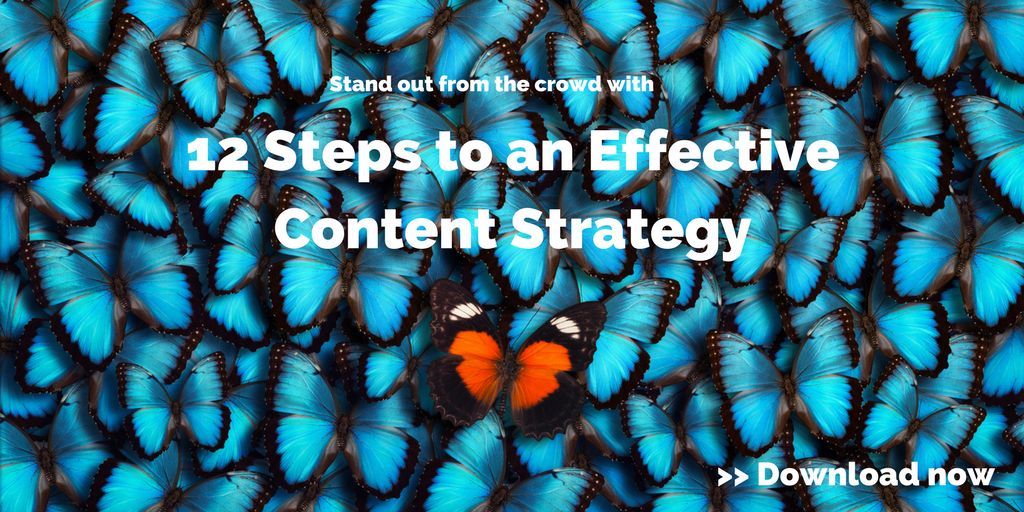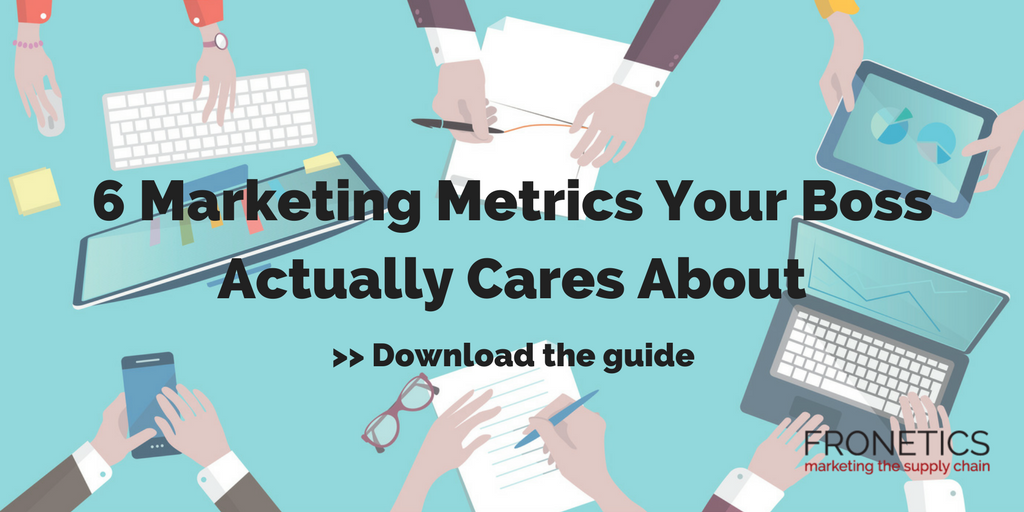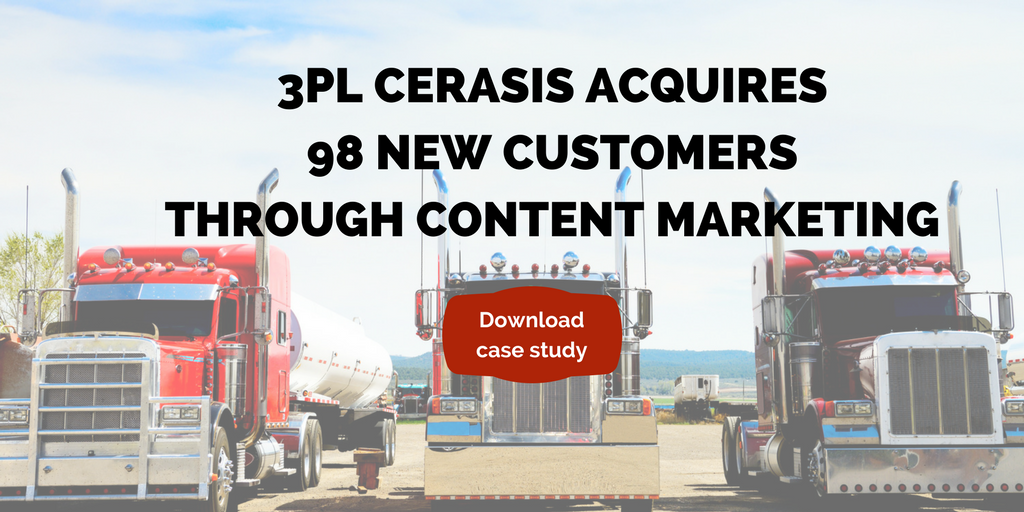
by Elizabeth Hines | Apr 17, 2019 | Blog, Marketing, Marketing Automation
Chatbots are a must-have lead generation and customer service tool for supply chain businesses in 2019.
The newest generation of B2B buyers is increasingly dominating the two-way conversation between marketers and buyers. They prefer to gather purchasing information on their own — overwhelmingly via online searches, vendor websites, and peers and colleagues — rather than talking to sales representatives. They are unsubscribing from marketing emails at alarming rates, citing over-communication as the number-one reason why. And they are using messaging platforms to speak directly with brands when they have questions or problems.
At the same time, buyers are demanding more personalized communications, faster response times, and an improved, cohesive user experience on all of a vendor’s digital channels.
All these factors are driving the growing popularity of chatbots as a lead generation and customer service tool. But, at Fronetics, we think it’s time to stop viewing them as a trendy communication mechanism and more as a necessary part of a supply chain operation’s marketing strategy.
Chatbot applications for the supply chain
I’ve written before about the impressive implications that automation has for supply chain marketing & sales efforts. (HubSpot reports that businesses using marketing automation receive a 451% increase in qualified leads.) At Fronetics, we’re seeing chatbots as one of the most successful and easy-to-implement marketing automation tools in the current marketplace.
Chatbots are relatively inexpensive, inherently low-maintenance, and surprisingly user-friendly — to both the buyers interacting with them and the vendors setting them up. They help website visitors find the information they need quickly, while gathering user data that is useful in marketing and sales efforts, all without taxing human resources. In fact, Chatbots Life reports that businesses can save up to 30% of costs associated with servicing customer requests by using a chatbot.
Millennials, in particular, appreciate the quick, easy, and unobtrusive communication option that chatbots offer. And, as we all know, this generation comprises an increasing percentage of the B2B purchasing landscape. In a crowded marketplace, vendors that offer a pleasing user experience will have the competitive edge when it comes to winning business and growing a base of loyal customers.
A real-life example
We are recommending chatbots to clients because we have seen firsthand how effective they can be. I’ll give you an example from our own experience at Fronetics.
We recently implemented a chatbot on our website that we synced with my calendar, allowing users to schedule a time to speak with me about our services. I am not exaggerating when I say that within 24 hours, we had a lead come through the bot. I spoke with that lead at the time he scheduled, the next morning, and delivered a proposal to him the next day.
Chatbots are here — in a big way. If you’re not using one, your competitors certainly are (or will be soon). Having a chat mechanism on your website will soon be the difference between winning more business and missing out… if it’s not already.
This post originally appeared on EBN Online.
Related posts:


by Fronetics | Apr 16, 2019 | Blog, Content Marketing, Marketing, SEO, Video Marketing
With the growing popularity of video, it’s harder for video posts to rank in search results. Here’s what marketers need to know about SEO and video posts.
Highlights:
- When choosing your video hosting platform, it’s important to consider the reasons why you want your videos to rank, such as lead generation or brand awareness.
- Spend time crafting an engaging video title and description and make sure to use keywords audiences are actually searching for.
- Don’t solely rely on optimizing your video to receive placement on search engines. It’s just as important that the rest of the page is optimized for SEO.
Video transcript:
I’m Ulrika Gerth, and I’m the Content Writer and Strategist at Fronetics. Today I’m going to talk about what you need to know about SEO and video posts.
So video SEO is simply optimizing your video to be indexed and rank on the search engine results pages, like Google.
In the last few years, video marketing has become more and more popular among businesses and it’s easy to see why. It’s cost effective and easy to produce. But with the explosion of video, it’s also become much harder to get ranked on universal search results.
Here are a few ways to optimize your videos.
1. Pick the best platform.
When choosing your video hosting platform, you need to consider the reasons why you want your videos to rank. Are you optimizing your video to gain traffic and generate leads? Or are you more interested in thought leadership and brand awareness?
2. Make the video engaging.
The video thumbnail is what searchers will see when your video is indexed, and therefore it plays an important role in whether they will click on your video.
3. Pay attention to the title and description of your video.
Just like they do for a blog post, the title and description play a role in ranking videos. Spend time crafting an engaging video title and description. Make sure you do keyword research so you use keywords people are actually searching for.
4. Ensure the rest of your page is relevant to the video and optimized for SEO.
You can’t rely only on optimizing your video to receive placement on search engines. It’s just as important that the rest of the page is optimized for SEO, or the search engines won’t bother to crawl it in the first place.
For more information, visit fronetics.com.
Related posts:


by Fronetics | Mar 26, 2019 | Blog, Content Marketing, Logistics, Marketing, Supply Chain, Video Marketing
The popularity of video marketing is on the rise, and savvy supply chain marketers are using this medium to tell their brand’s story, broaden their audience, and generate leads.
Highlights:
- Use video to tell your brand’s story, broaden your audience, and generate leads.
- As marketing expands in a more visual direction, marketers should adjust their strategies to favor content that lends itself to this kind of storytelling.
- Consider accompanying data-heavy blog posts with explanatory animated videos, conducting and sharing video interviews with industry executives, or turning a case-study into an animated video presentation.
Video transcript:
I’m Frank Cavallaro, CEO and founder of Fronetics, and today I’m going to be talking about video marketing and the supply chain.
Video is the most popular content being consumed online today. And it shows no sign of letting up. Video let’s savvy marketers tell their brand’s story, broaden their audience, and generate more leads. Video allows the marketer to consistently deliver content that is visually stimulating and valuable.
[bctt tweet=”Using animated video for case studies makes them easier to understand for the user. And because they’re entertaining and engaging, there’s a huge ROI that comes along with them.” username=”Fronetics”]
Consider pairing data-heavy blog posts with some sort of video, whether its animated or a subject matter interview. Using animated video for case studies makes them easier to understand for the user. And because they’re entertaining and engaging, there’s a huge ROI that comes along with them.
When using video remember what you need is quality, high engaging, well researched content. For more information, visit us at fronetics.com.
Related posts:


by Fronetics | Feb 13, 2019 | Blog, Content Marketing, Marketing, SEO
Search engines are constantly changing, but these 5 tips will ensure that supply chain marketers can boost SEO in 2019.
Highlights
- People are changing how they search, and search engines are adapting accordingly.
- Simple changes to the structure of your site can have a big impact on your search engine rankings.
- Sites rich in quality content, like blogs and video, are poised to rank high for relevant search queries.
If there’s one constant when it comes to writing to boost Search Engine Optimization (SEO), it’s change. As users change the way they search online, search engines are continually adapting their algorithms to meet their needs. While it’s easy to get overwhelmed, it’s important for supply chain marketers to stay up-to-date and adapt their content strategy to boost SEO.
The year is just getting into full swing, and it’s a great time for savvy marketers to look ahead and make strategic decisions for SEO in 2019. These five tips will help you get ahead of the curve.
5 ways to boost SEO in 2019
1) Cluster content
Gone are the days of keyword rankings. Rather than prioritizing keyword focus, search engines have shifted to rewarding sites that produce strong content and arrange it in focused, niche topics.
Cluster content, a method of on-site SEO, might sound daunting. But it doesn’t require reinventing the wheel, just changing the structure of your site. For a detailed look at topic clusters and pillar content, check out part three of our four part series on writing for SEO.
We’ll give you the short version here: Select several core topics that most closely align with your brand, and reflect the knowledge you have to share. Evaluate your existing content, and categorize it based on which core topic or topics it falls under. Going forward, keep these core topics top of mind when planning and creating content. Next, arrange your site to reflect core topics with content clustered and linked from pillar pages.
2) Use header tags
As they become more and more sophisticated, search engines increasingly mirror human preferences. It doesn’t take an expert to tell you that text is more accessible to the eye when broken up by relevant subheadings — and search engines are no different. Headings make your text easier to skim and allow search engines to pick out content relevant to search queries.
Subheadings make your site more visually appealing, orienting readers and providing structure within your content. Remember that you’re creating headings for the dual purpose of guiding readers and optimizing for search engines. For this reason, stick to headings that are short and informative, reflecting the content below them, rather than teasing your readers with click-baity phrases.
[bctt tweet=” Stick to headings that are short and informative, reflecting the content below them, rather than teasing your readers with click-baity phrases.” username=”Fronetics”]
3) Blog
This one is evergreen. We’ve been writing for years about how blogging is crucial for supply chain companies, for all kinds of reasons — not the least of which is SEO. If increased lead generation and site engagement isn’t reason enough, you should know that blogging is one of the best ways to boost SEO.
A blog is your space for high-quality content that’s fresh, well-researched, and relevant. If you’re choosing your topics based on the needs and preferences of your target audience, chances are, you’re creating content that is perfectly aligned to search engine queries.
4) Make sure your page speed is high
Page speed is crucial for boosting SEO. If your page is loading slowly, Google logs it, and your ranking suffers. Not only that, visitors who do click on your site will be frustrated and turn away.
In fact, research shows that 40% of visitors will abandon sites where the page takes longer than three seconds to load.
One of the best ways to improve page speed is to switch to HTTP/2. If you haven’t already, switching your site from HTTP/1.1 (which has been the norm since 1999) is crucial. HTTP/2 was first published in 2015, with the goal establishing a faster, more secure internet. Search Engine Journal has published this great guide to HTTP/2, where you can learn more about the benefits, and how to switch.
5) Video
We’ve been talking about the benefits of video for a while now. Having video on your landing page will robustly improve your SEO. Video increases conversion rates, improves bounce rates, and boosts overall time on sites.
Search engines use bounce rate to rank pages — a low bounce rate and high user retention rate are indicators of strong content and high relevance to your target audience. Consequently, Google is strongly emphasizing these metrics in its ranking algorithm. Video keeps users on your site better than just about anything else and is therefore one of the most effective ways to boost SEO.
Related posts:


by Elizabeth Hines | Oct 18, 2018 | Blog, Content Marketing, Logistics, Marketing, Strategy, Supply Chain
The supply chain is increasingly seeing the value of moving to an inbound marketing strategy. Here’s what’s at the core of the change to inbound marketing.
Traditional marketing in the supply chain uses an outbound strategy. We’ve all done it. Taking out ads in trade publications. Sending direct mailings. Cold calling.
These types of approaches fight to get your brand name in front of prospective customers, hoping to get a marketing message that resonates in front of the right person at the right time.
Inbound marketing is different
Inbound marketing is different. It’s, well, confident. It showcases your industry merit rather than trying to convince people of it.
With inbound marketing, you publish relevant, informative content where your audience already is – your website, related social media, and other online industry channels – to add value at every stage of their buyer’s journey.
Prospective customers come to associate your brand with industry expertise. When they are ready to buy, they think of you. That’s an inbound content marketing strategy.
Why the supply chain is shifting to inbound content marketing
The supply chain is increasing seeing the value of moving to an inbound marketing strategy. What’s at the core of the change to inbound marketing?
On a theoretical level, it’s recognizing that your business has more to offer than its primary product or service. This is so very important. You also have a team of extremely knowledgeable industry experts with unique and informed perspectives.
But switching to an inbound content marketing strategy is also about recognizing that your customers want much more from you than just your product. The business to busienss (BtB) buying climate is growing longer and more complex, and customers today are demanding value outside the sales funnel. Traditional outbound marketing accomplishes neither of these.
[bctt tweet=”Switching to an inbound content marketing strategy is about recognizing that your customers want more from you than just your product. Customers today are demanding value outside the sales funnel. ” username=”Fronetics”]
Why inbound marketing is better for the supply chain
If that didn’t convince you, put simply, inbound content marketing is just more effective for four main reasons:
- Cost. Inbound marketing is typically less expensive than outbound. Hubspot reports that each sales lead costs approximately 61% less for organizations that employ an inbound strategy versus those that focus on outbound marketing.
- Measurability. Measuring your success with inbound marketing is considerably easier. For example, you’ll never know how many people saw your billboard, but you can measure exactly how many people read your blog post.
- Longevity. Digital content is often evergreen – meaning it’s forever relevant – and older posts that need an update can be easily optimized. Essentially, content lives forever and continues drive traffic long after you publish it. In fact, at Fronetics, about 80% of our traffic comes from posts that are 6 months old or older.
- Targetability. With inbound marketing, you only expend resources on prospects that are already looking for information about your industry, products, and services, making inbound marketing a much more targeted approach for your lead-nurturing efforts. Less expensive, easier to measure, lasts longer, and represents a more targeted approach? Seems like a no-brainer. But what’s the catch? Well, executing a good inbound content marketing isn’t easy, and it generally takes at least six months to yield results.
Executing a good inbound content marketing strategy
Done well, inbound content marketing is extremely effective. A good content marketing strategy is about understanding the questions and concerns that are particular to your customer base and about offering quality information and analysis that answers those needs.
The role of content in the supply chain and logistics industries is to grow brand awareness and customer engagement, increase lead generation and nurturing, and establish your company as an industry thought leader in the minds of your prospective customers.
An inbound marketing strategy helps you become more than just another business to customers. You can become a valuable resource for everything related to your products, services, and industry as a whole. Which is precisely what your potential customers are currently expecting from your supply chain and logistics business.
This post originally appeared on EBN Online.
Related posts:








